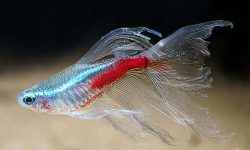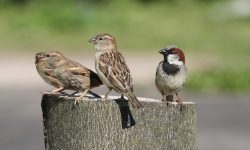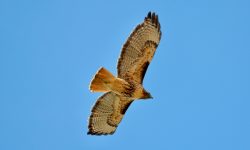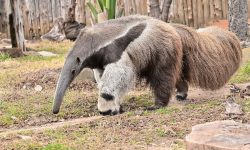Geese are fascinating creatures that possess remarkable traits and behaviors. Known for their honking calls, impressive migration patterns, and strong social bonds, these birds are more than just a common sight in fields and skies. They are integral parts of ecosystems and exhibit intriguing behaviors when in groups. But one of the more curious aspects of geese is the terminology associated with their groupings.
If you’ve ever wondered, “What is a group of geese called?” you are not alone. This article delves into the various terms used to describe groups of geese, explains why geese form groups, and offers interesting facts that might surprise you about these social, migratory birds.
What Is a Group of Geese Called?
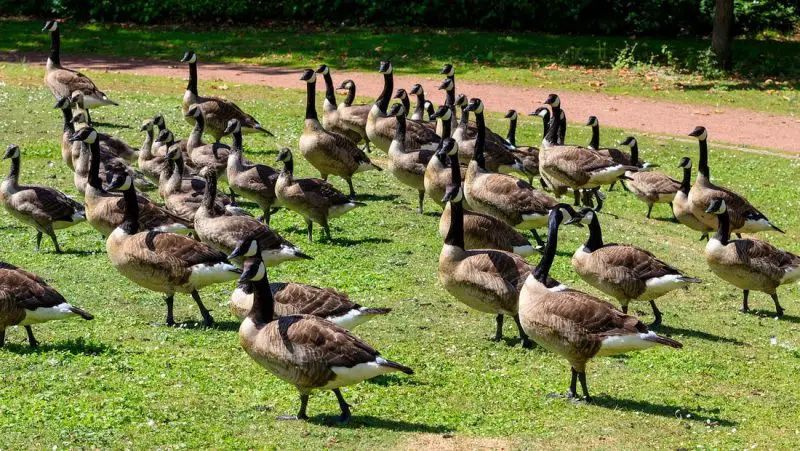
When it comes to geese, the term used to describe a group can depend on whether they are on the ground, in the water, or flying high above. These terms add a touch of color and precision to how we talk about geese, and each term highlights a different aspect of their behavior and movement.
Gaggle of Geese
A “gaggle” is a term used to describe a group of geese when they are on the ground or in the water. This is probably the most common term people associate with geese, especially when they are not in flight. A gaggle of geese typically refers to a group that is gathered in a particular area, often making a lot of noise as they interact with each other. Whether they are foraging for food, socializing, or simply resting, the gaggle can be a loud and lively group.
The term “gaggle” evokes the image of geese in a somewhat chaotic state, honking loudly and moving in various directions. This behavior is natural as geese communicate with each other, using their honking calls to alert one another of dangers, or to simply maintain contact with their flockmates. It’s during this time that geese are seen most frequently in large numbers, whether in wetlands, fields, or parks.
Skein of Geese
When geese take to the sky, their collective effort is referred to as a “skein.” This term is used specifically for geese flying together, often in a V-formation, which is the most common migratory formation for these birds. Geese use this V-shaped structure to conserve energy during long-distance travel. The lead goose experiences the most resistance from the wind, so other geese take turns leading the formation to ensure that no one bird becomes overly fatigued.
The V-formation isn’t just for energy conservation—it also allows the geese to communicate and stay in sync with one another. Each goose can easily see the others, which helps maintain the group’s cohesive movement. The term “skein” evokes the fluid, almost graceful movement of geese in flight, as they travel thousands of miles together in unison.
Plump of Geese
While less commonly used, the term “plump” can also refer to a group of geese in flight. Like “skein,” this term applies to a group flying together, typically in a tight V-formation. The term “plump” may have originated from the close-knit nature of the formation, as the birds fly so closely together that they appear to form a tightly packed “group.” The use of the term “plump” may also highlight the round, somewhat bulky appearance of geese in flight, especially as they gather during migration.
Team of Geese
Occasionally, a group of geese in flight is referred to as a “team.” The idea of a “team” highlights the collaborative nature of geese as they migrate, demonstrating their collective effort to reach a common destination. Each member of the team plays an important role, whether by taking turns leading, navigating, or maintaining formation. The concept of a “team” reinforces the sense of cooperation and mutual support among the geese, underscoring how they work together to ensure the survival of the group during migration.
Flock of Geese
The general term used for any group of geese, regardless of their activity, is a “flock.” A flock can refer to geese on the ground, in the water, or in the air. It’s a broad term that encompasses any gathering of geese, making it the most commonly used word to describe a group of these birds. The term “flock” applies to both migratory geese flying together in the sky and geese gathering in fields or wetlands. It is also used when geese are foraging together or resting in a single location. It’s the simplest, catch-all term to describe a gathering of geese, but it doesn’t convey the specific behaviors that the terms “gaggle,” “skein,” or “plump” do.
Why Do Geese Form Groups?
Geese are inherently social creatures, and their tendency to form groups is driven by various factors essential to their survival. These factors range from protection against predators to the energy-efficient strategy of migrating in large numbers.
Safety in Numbers
One of the primary reasons geese form groups is for safety. A large group provides several advantages when it comes to defending against predators. The larger the group, the greater the chance that some geese will survive an attack. By sticking together, geese can ward off potential threats. The collective noise of a gaggle, for instance, can deter predators or signal an approaching danger to other members of the group. In addition, staying in groups helps to confuse predators, making it harder for them to target a specific individual.
Migration and Efficiency
Geese are migratory birds, and they travel vast distances to find warmer climates during the winter. Migration is one of the most important reasons geese form groups. Flying together in formations like the V-formation helps geese conserve energy. The lead goose faces the most air resistance, which makes flying more difficult for it, so other geese take turns leading the group. This energy-efficient strategy allows them to cover long distances with less fatigue, ensuring the entire group can make it to its destination.
Geese use the V-formation not just for energy conservation but also for optimal aerodynamics. The updraft created by each bird’s wings helps the geese flying behind conserve energy, allowing the entire group to travel further.
Social Interaction
Geese are highly social animals, and their groupings provide opportunities for bonding and communication. Whether they are honking loudly to communicate with each other or engaging in social interactions like preening or foraging together, geese rely on these social behaviors to maintain cohesion and support within the group. The social structure within a group of geese is essential for their survival, as it fosters cooperation and coordination in activities such as migration and foraging.
Raising Young
During the breeding season, geese form smaller family groups. These groups are essential for protecting and raising young goslings. The parents work together to care for their offspring, teaching them important survival skills like how to forage for food and recognize potential dangers. The presence of other geese can offer additional protection, as the larger group creates a more formidable defense against predators.
Interesting Facts About Geese
Geese are incredibly interesting creatures, known for their unique behaviors, physical characteristics, and remarkable adaptability. Here are some fascinating facts about geese that you may find surprising.
Geese Are Exceptional Navigators
Geese are known for their impressive navigational abilities. They rely on a combination of visual cues, the position of the sun, and even the Earth’s magnetic field to help them navigate across vast distances. Some geese even have the ability to navigate by using the stars, which helps them find their way during migration. This highly developed sense of direction ensures that they can travel thousands of miles, often returning to the same locations year after year.
Geese Mate for Life
Many species of geese are monogamous, forming long-lasting pair bonds. Once a goose finds a mate, they will typically stay together for life. This strong bond allows the geese to work together in raising their young, ensuring the survival of their offspring. Geese are highly committed to their families, and their partnership lasts throughout the year, with the pair raising multiple generations together.
Geese Have Impressive Memory Skills
Geese possess remarkable memory capabilities. They can remember specific locations where they have found food in the past and will return to those places during subsequent migratory journeys. Their ability to recall migration routes and feeding locations helps them optimize their travel and foraging efforts.
Geese Communicate Through Honking
Honking is one of the primary ways geese communicate with each other. From alerting the group to the presence of a predator to signaling that it’s time to take flight, honking serves many purposes in a geese’s social behavior. Each honk has a different meaning, and geese can use various vocalizations to communicate specific messages within the group. This intricate communication system helps maintain order and coordination within the flock.
Geese Can Live for Several Decades
While the average lifespan of a wild goose is around 10 to 15 years, some geese have been known to live much longer. In captivity, geese can live up to 30 years or more. However, in the wild, survival can be tough due to predators, disease, and environmental factors, which often shorten their life expectancy.
Conclusion
Understanding what a group of geese is called and why geese form groups reveals just how remarkable these birds truly are. From their social bonds to their energy-saving migration techniques, geese demonstrate cooperation, intelligence, and adaptability. Whether they are known as a gaggle, skein, plump, or flock, each term offers insight into their behavior and life as a collective. Geese remind us of the importance of unity and the power of working together to overcome challenges.

